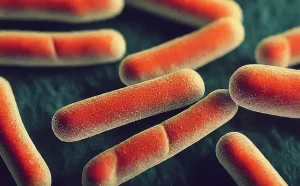Interpretation of global cancer statistics in GLOBOCAN2020
- Why Botulinum Toxin Reigns as One of the Deadliest Poisons?
- FDA Approves Pfizer’s One-Time Gene Therapy for Hemophilia B: $3.5 Million per Dose
- Aspirin: Study Finds Greater Benefits for These Colorectal Cancer Patients
- Cancer Can Occur Without Genetic Mutations?
- Statins Lower Blood Lipids: How Long is a Course?
- Warning: Smartwatch Blood Sugar Measurement Deemed Dangerous
Interpretation of global cancer statistics in GLOBOCAN2020
- Red Yeast Rice Scare Grips Japan: Over 114 Hospitalized and 5 Deaths
- Long COVID Brain Fog: Blood-Brain Barrier Damage and Persistent Inflammation
- FDA has mandated a top-level black box warning for all marketed CAR-T therapies
- Can people with high blood pressure eat peanuts?
- What is the difference between dopamine and dobutamine?
- What is the difference between Atorvastatin and Rosuvastatin?
- How long can the patient live after heart stent surgery?
Interpretation of global cancer statistics in GLOBOCAN2020. Cancer is a serious hazard to human life and health.
According to estimates by the World Health Organization in 2019, cancer is the first or second leading cause of human death among people under the age of 70 in 112 countries out of 183 countries.
Understanding cancer epidemic data can provide basic information and guidance for cancer prevention and control, and to promote cancer etiology research and describe global cancer epidemiology.
In 1965, the International Agency for Research on Cancer (IARC) was established in Lyon, France. formally established. GLOBOCAN is an important project of IARC.
It counts 36 types of cancer incidence, mortality, and cancer development trends in 185 countries/regions around the world. It aims to summarize the epidemiology of global cancer and its impact on human health. Researchers can get the results on IARC’s Global Cancer Observatory (https://gco.iarc.fr).
In December 2020, IARC updated the database (formerly GLOBOCAN 2018). Currently, GLOBOCAN 2020 is the latest version of the GLOBOCAN database. Cancer morbidity and mortality are increasing rapidly around the world, which is not only related to the aging of the population and the increase in population, but also reflects the prevalence and distribution of major cancer risk factors.
Studies have shown that some of these risk factors are related to socio-economic development. The GLOBOCAN2020 database not only provides the latest global cancer burden status, but also divides the global economic development level into very high, high, medium and low levels according to the human development index (HDI), which is used to analyze cancer incidence and death.
The relationship between rate and HDI. In addition, GLOBOCAN 2020 adds new forecast data for cancer burden in 2040. In order to make better use of relevant data and information, this article sorts out the updated database and interprets important updates.
1 The current status of the global cancer epidemic in 2020
1.1 Overview of global cancer incidence and death
In 2020, there are an estimated 19.292,789 new cancers worldwide. The number of cases of the top 10 cancer types accounted for more than 60% of all new cancers. Female breast cancer surpassed lung cancer as the most common cancer for the first time. In 2020, 2,261,419 new cases of breast cancer occurred, accounting for 11.7% of the overall cancer incidence, followed by lung cancer (11.4%), colorectal cancer (10.0%), and prostate cancer (7.3%) ) And stomach cancer (5.6%).
Among men, lung cancer, prostate cancer and colorectal cancer are the most common. Breast cancer, colorectal cancer and lung cancer are the main cancers in women. In 2020, there are an estimated 9,958,133 cancer deaths worldwide. The top 10 cancer types account for more than 70% of all cancer deaths. Lung cancer is still the leading cause of cancer deaths.
An estimated 1,796,144 people died of lung cancer, accounting for 18.0% of all cancer deaths, followed by colorectal cancer (9.4%), liver cancer (8.3%), gastric cancer (7.7%) and female breast cancer Cancer (6.9%). Lung cancer and female breast cancer are the leading causes of death in men and women, respectively.
Among men, the incidence of cancer increases with the increase in HDI, from 104.3 per 100,000 in low HDI countries to 335.3 per 100,000 in high HDI countries. Male cancer death rates in high HDI countries (122.9-141.1/100,000) are twice as high as those in medium and low HDI countries (76.7-78.0/100,000). Among women, the incidence of cancer has a positive relationship with HDI, ranging from 128.0/100,000 in low HDI countries to 267.6/100,000 in high HDI countries. For cancer mortality, there is little difference between different HDI countries, the lowest is 66.9/100,000 and the highest is only 90.3/100,000
1.2 Global cancer development model
The distribution of cancer types presents obvious geographic and gender differences. Among men, prostate cancer is the most commonly diagnosed cancer in 112 countries, followed by lung cancer (36 countries), colorectal cancer, and liver cancer (11 countries). For mortality, lung cancer is the leading cause of cancer deaths in 93 countries, followed by prostate cancer (48 countries) and liver cancer (23 countries). Compared with men, the most commonly diagnosed cancers among women are breast cancer (159 countries) and cervical cancer (23 of the remaining 26 countries).
The distribution of cancer mortality among women is quite different. Breast cancer and cervical cancer are the leading causes of cancer deaths in 110 and 36 countries respectively, followed by lung cancer (25 countries). Due to the different types of cancer and the increase in cases, 49.3% of cases and 58.3% of cancer deaths occurred in Asia (with 59.5% of the global population), of which 51.7% of cancer deaths occurred in China. Although the European population only accounts for 9.7% of the global population, cancer cases and deaths account for 22.8% and 19.6% of the global population respectively.
Followed by the Americas, cancer cases accounted for 20.9% of the world, and cancer deaths accounted for 14.2% of the world. Table 2 shows the incidence and mortality of cancer in different regions. Globally, although the incidence of cancer varies from region to region, the incidence of all cancers in men (222.0/100,000) is 19% higher than that of women (186.0/100,000). Among men, the difference in the incidence of cancer in different regions is about 5 times, from 494.2 per 100,000 in Australia/New Zealand to 100.6 per 100,000 in West Africa; among women, this rate has turned nearly 4 times, from Australia/New Zealand From 405.2 per 100,000 in Central and South Asia to 102.5 per 100,000 in Central and South Asia. The gender difference in total cancer mortality worldwide is twice the difference in incidence rates (120.8/100,000 and 84.2/100,000 respectively), and the cancer mortality rate in men is 43% higher than that in women.
Among men, the mortality rate ranges from 165.6 per 100,000 in Eastern Europe to 70.2 per 100,000 in Central America. Among women, Melanesia has the highest mortality rate (118.3 per 100,000), and Central America and Central and South Asia have the lowest mortality rate (63.1 per 100,000). It is worth noting that the cumulative risk of women dying from cancer in 2020 is higher in East Africa (11.0%) than in North America (8.2%), Western Europe (8.8%) and Australia/New Zealand (7.4%).
1.3 Incidence and death of major cancers in the world
Common cancers worldwide include breast cancer, lung cancer, colorectal cancer, prostate cancer, gastric cancer and liver cancer, accounting for about 50.7% of all cancers in total (Table 1). Breast cancer surpassed lung cancer to become the world’s most morbidity cancer for the first time. 159 countries out of 185 countries have the highest incidence rate of breast cancer, and its incidence and death are the highest among women’s cancers.
The morbidity and mortality rate are 47.8/ 100,000 and 13.6/100,000. The region with the highest incidence of breast cancer in the world is Australia/New Zealand (95.5/100,000), followed by Western Europe (90.7/100,000) and North America (89.4/100,000); the region with the highest mortality rate is Melanesia (27.5 /100,000). Lung cancer is the second most common cancer in the world, with 2,206,771 new cases and 1,796,144 deaths.
The incidence and mortality of men are almost twice that of women. Among men, lung cancer is the most common cancer in 36 countries and the leading cause of death from cancer in 93 countries around the world. The regions with the highest incidence of lung cancer in the world are Polynesia (51.6/100,000), Eastern Europe (49.0/100,000), East Asia (48.1/100,000), Southern Europe (43.1/100,000) and West Asia (41.7/100,000), Africa The incidence of lung cancer is lowest in the region. Among women, lung cancer is the leading cause of cancer death in 25 countries around the world.
The regions with the highest incidence of lung cancer in the world are North America (30.1/100,000), Northern Europe (26.8/100,000), Western Europe (25.0/100,000), Polynesia (22.9/100,000), Australia/New Zealand (22.7/100,000) And East Asia (22.1/100,000) and other regions. Colorectal cancer is the third most common cancer in the world. In 2020, a total of 1931590 cases of colorectal cancer were diagnosed worldwide, and 935,173 people died of colorectal cancer.
Globally, the incidence of colon cancer varies greatly. Europe, Australia/New Zealand and North America have the highest incidence of colon cancer. The incidence of colon cancer in the highest regions is 9 times that of the lowest regions. The incidence distribution of rectal cancer is similar to that of colon cancer. The incidence of colorectal cancer is low in most parts of Africa and Central and South Asia. In 2020, there were 1,414,259 new cases of prostate cancer and 375,304 deaths.
It is the fourth most common cancer in the world and the second most common cancer in men, accounting for the fifth most common cancer death in men. The incidence of prostate cancer is higher in Northern Europe (83.4/100,000), Western Europe (77.6/100,000), Caribbean (75.8/100,000), and Australia/New Zealand (75.8/100,000). In Asia, prostate cancer is less common (incidence rate <20.0/100,000).
Gastric cancer is still one of the most common cancers in the world. In 2020, there are more than 1 million new cases of gastric cancer and 769,000 deaths worldwide, making it the fifth most common cancer and the fourth leading cause of cancer death in the world. The incidence of gastric cancer in men is twice that of women. Among men, the areas with a higher incidence of gastric cancer are mainly in East Asia (32.5/100,000), Eastern Europe (17.4/100,000), South America (12.1/100,000), West Asia (11.4/100,000) and Southern Europe (10.2/ 100,000). Among women, East Asia has the highest incidence of gastric cancer (13.2/100,000), followed by Eastern Europe (7.1/100,000). Liver cancer is the sixth most common cancer and the third cause of death from cancer.
In 2020, there will be 905,677 new cases of liver cancer and 830,180 deaths. In most parts of the world, the incidence of liver cancer in men is 2 to 3 times that of women. Among men, East Asia has the highest incidence of liver cancer (26.9/100,000), followed by Southeast Asia (21.2/100,000), North Africa (20.2/100,000), Polynesia (17.1/100,000) and Melanesia (13.8/100,000) ). Among women, the incidence of liver cancer in North Africa is the highest (10.5/100,000), followed by Melanesia (9.0/100,000) and East Asia (8.9/100,000).
1.4 The cancer burden forecast in 2040 predicts that by 2040, global new cancer cases will reach 28.4 million, an increase of 47% compared to 2020, and countries with low or medium levels of development have the largest increase in cases, 95% and 64, respectively %. In terms of the absolute burden of cancer, high HDI countries have the largest increase, which is expected to increase by 4.1 million more than the number of new cases in 2020 (Figure 3). This prediction is only due to population growth and aging, and it is expected that it may be due to risk factors in the future. The burden of cancer will further increase.
2 Cancer prevention
2.1 Primary prevention
2.1.1 Smoking cessation and alcohol restriction tobacco
It was listed as a Class I carcinogen by IARC in 1986. The incidence and death of a variety of cancers are related to smoking, including but not limited to lung cancer, esophageal cancer, liver cancer, and gastric cancer. The differences in the distribution of lung cancer incidence and mortality between different countries and regions are largely related to the prevalence of tobacco. About two-thirds of lung cancer deaths worldwide can be attributed to smoking.
As the world’s largest tobacco producer and consumer, China causes approximately 435,000 new cancer cases per year due to smoking (366,000 males and 75,000 females). According to data published by the American Cancer Research Institute, from 1990 to 2016, the mortality rate of lung cancer in men in the United States decreased by 48%; from 2002 to 2016, the mortality rate of lung cancer in women in the United States also fell by 23%.
This remarkable achievement is mainly attributed to the United States. Effective implementation of tobacco control measures. Therefore, effective tobacco control is essential to reduce the burden of cancer. IARC listed alcohol as a carcinogen in 1988. Alcohol intake is a high-risk factor for oral cancer, laryngeal cancer, stomach cancer, liver cancer, esophageal cancer, colorectal cancer and breast cancer, and as alcohol consumption increases, the risk of cancer also increases.
In addition, studies have found that drinking and smoking have a synergistic effect on the occurrence of cancer. Therefore, actively promoting the action of tobacco and alcohol restriction has always been an important measure to effectively control the burden of cancer.
2.1.2 Infection control vaccination is the most effective way to reduce the burden of cancer related to infectious factors.
East Asia is a high-risk area for liver cancer. Since the 1970s, the introduction of hepatitis B vaccine has effectively reduced the incidence of liver cancer in East Asia. The main risk factor for liver cancer is chronic infection of hepatitis B virus or hepatitis C virus, which causes 56% and 20% of liver cancer deaths, respectively. As of 2019, 189 countries around the world have included neonatal hepatitis B vaccine into their national immunization programs, and the global coverage rate for the entire 3-shot vaccine is 85%. The most important risk factor for liver cancer in China is hepatitis B virus infection.
In 1992, some countries began to promote hepatitis B vaccination nationwide. In 2005, the State Council promulgated the “Regulations on the Administration of Vaccine Circulation and Vaccination”, realizing neonatal hepatitis B. Vaccination is completely free. In 2009, a supplementary hepatitis B vaccine project was implemented for children born in 1994-2001 who did not complete the full immunization process, and a total of 68.31 million were supplemented. This series of measures laid an important foundation for reducing the infection rate of hepatitis B virus in some countries.
The 2006 national hepatitis B seroepidemiological survey showed that the hepatitis B virus surface antigen carrying rate of the Chinese population (1 to 59 years old) was 7.18%, which was 26.4% lower than that in 1992. High-risk human papilloma virus (HPV) infection is the most important risk factor for cervical cancer, and its 12 subtypes have been classified as Class I carcinogens by IARC. HPV vaccine is expected to reduce the disease burden of cervical cancer.
At present, the World Health Organization believes that 2-dose HPV vaccination is the most economical and effective way for women aged 9 to 13 years old. In addition, studies have shown that eliminating Helicobacter pylori may reduce the incidence of gastric cancer.
2.1.3 Reasonable diet and physical activity A healthy, diversified and balanced diet and lifestyle can effectively prevent cancer from occurring.
Red meat, processed meat, and salted fish are all classified as carcinogens by IARC. Studies have shown that for every 50g increase in processed meat intake, the risk of cancer increases by 17%, and every 100g increase in red meat intake increases the risk of cancer by 18%. And sedentary and lack of physical activity are positively related to the risk of a variety of cancers. Improving sedentary behavior, performing appropriate physical activity, and maintaining a good weight can significantly reduce the risk of cancer.
The American Cancer Society recommends that adults should maintain at least 150-300 minutes of moderate-intensity exercise or at least 75-150 minutes of high-intensity exercise per week, or a combination of the two, preferably more than 300 minutes of exercise. People in various regions have their own deep-rooted lifestyles, which are not easy to change. Therefore, the formation of a healthy diet pattern and appropriate physical activity requires not only the participation of individuals, but also the intervention of the government and the whole society to vigorously strengthen the social publicity and health education of cancer prevention knowledge, improve the residents’ cancer prevention knowledge, and identify and avoid cancer risks. Exposure of factors, develop a healthy lifestyle.
2.2 Secondary prevention
The secondary prevention of cancer mainly refers to screening or early diagnosis and treatment, that is, in the apparently healthy people, early lesions can be found and removed in a simple way to achieve the purpose of improving the treatment effect. The important significance of secondary prevention is to achieve early Discovery, early diagnosis and early treatment.
A number of high-quality randomized controlled trials have proved that screening can effectively reduce cancer mortality and prolong survival. The American Cancer Research Institute recommends screening for lung cancer, breast cancer, colorectal cancer, prostate cancer, cervical cancer, and pancreatic cancer. The European region has also successively launched screening projects for colorectal cancer, breast cancer and cervical cancer.
The majority of cancer patients in China are in the advanced stage of clinical life, with poor prognosis. The survival rate of cancer is significantly lower than that of developed countries, only 40.5%. Since 2005, China has successively carried out a series of cancer screening projects, including the rural cancer early diagnosis and treatment project launched in 2005, the urban cancer early diagnosis and treatment project launched in 2012, and the Huaihe River Basin early cancer diagnosis project launched in 2007.
The early treatment project and the two-cancer screening project for rural women launched in 2009 cover 8 common cancer types in some countries (lung cancer, stomach cancer, esophageal cancer, liver cancer, colorectal cancer, nasopharyngeal cancer, cervical cancer and breast cancer). Effectively alleviate the burden of cancer in our country.
At present, with the continuous discovery and improvement of new screening technologies, screening can be expected to make outstanding contributions to reducing the burden of cancer.
2.3 Three-level prevention
The three-level prevention of cancer refers to measures such as preventing recurrence, reducing complications, preventing disability, improving survival rate and recovery rate, reducing pain caused by cancer, improving quality of life, and promoting rehabilitation for patients with existing cancer. Cancer patients are often accompanied by more complications, which have varying degrees of impact on the life and quality of life of the patients.
For example, cancer pain refers to the pain directly caused by cancer or the pain caused by cancer-related treatments. The incidence of pain in newly diagnosed cancer patients is about 25%, and the incidence of pain in patients with advanced cancer can reach 60%~80%, which has a serious impact Daily life of cancer patients. Medical staff should give corresponding treatment measures for the various symptoms of patients, including palliative treatment to eliminate the suffering of patients and improve their quality of life.
In addition, psychotherapy is also the main auxiliary method of cancer treatment. Medical staff help patients build self-confidence by caring and encouraging patients, which helps to improve the treatment effect and promote recovery.
Summary:
The global cancer burden varies significantly, but the situation of cancer prevention and control in various countries is relatively severe.
To reduce the global cancer burden in the future, effective cancer prevention and control measures tailored to local conditions are indispensable.
Governments of all countries must be guided by a comprehensive three-level prevention network, strengthen tobacco control work and popularize vaccines, and reduce exposure to risk factors.
With the support of the level of social development, we will emphasize the importance of cancer screening and improve the quality of cancer treatment, narrow the gap in cancer burden among countries, and gradually and steadily reduce the overall global cancer burden.
(source:internet, reference only)
Disclaimer of medicaltrend.org



